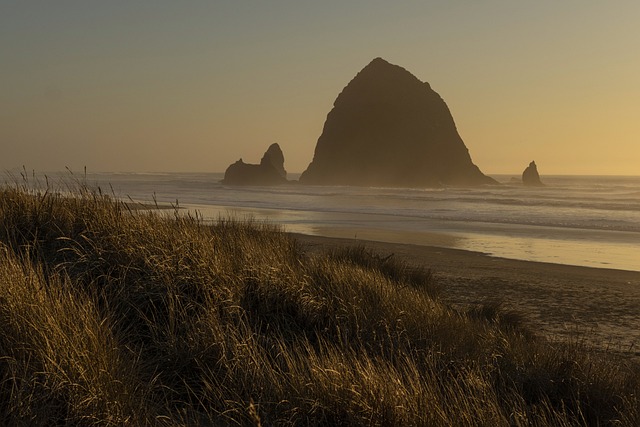The Temperance Movement's push for alcohol abolition led to Oregon's Lane County becoming a focal point during Prohibition (1920-1933). The 18th Amendment banned alcoholic beverages, sparking a surge in speakeasies and bootlegging. Local authorities and volunteers enforced prohibition laws, clashing with underground liquor operators. This era highlights the complex relationship between federal legislation, local control, and societal demands, while speakeasies served as vibrant social hubs despite the risks involved.
“Explore the fascinating lane County prohibition history and uncover the intricate tale of Oregon’s speakeasy culture during the 1920s. From the grassroots Temperance Movement’s influence on local communities to the clandestine world of bootleggers and hidden bars, this era shaped Lane County’s identity. Delve into the stringent prohibition laws and discover the unique challenges faced by law enforcement in curbing illegal activities. Uncover historical lessons from these years, providing insights into a pivotal moment in Oregon’s social and legal landscape.”
- The Temperance Movement and Its Impact on Lane County
- Oregon's Prohibition Era: Laws and Their Implementation
- Life in a Lane County Speakeasy
- Enforcing the Ban: Challenges and Tactics
- Historical Legacy: Lessons from Lane County's Prohibition Years
The Temperance Movement and Its Impact on Lane County

The Temperance Movement, a social and political reform push for the abolition of alcoholic beverages, significantly influenced Lane County’s history during the Prohibition era. This movement gained momentum in the late 19th century, fueled by concerns about alcohol’s impact on public health, morality, and family welfare. In Lane County, as across Oregon, the growing anti-alcohol sentiment led to the implementation of prohibition laws in 1920, marking a significant shift in local culture and economy.
The influence of the Temperance Movement became evident in the strict enforcement of Prohibition laws in Lane County. Local authorities and volunteers worked tirelessly to combat bootlegging and the operation of speakeasies—secret bars that served illegal alcohol. This era was characterized by covert operations, daring raids, and a constant cat-and-mouse game between law enforcers and those running underground liquor operations. The efforts were driven by the desire to uphold the new prohibition laws and maintain the social order envisioned by the Temperance Movement supporters.
Oregon's Prohibition Era: Laws and Their Implementation

During the Prohibition Era (1920-1933), Lane County, Oregon, like many other regions across the nation, grappled with the challenges of enforcing federal laws prohibiting the sale and consumption of alcoholic beverages. The 18th Amendment to the U.S. Constitution, ratified in 1919, marked a significant shift in American society by outlawing the “production, import, export, transport, and sale” of alcohol. In Lane County, this led to a surge in speakeasies—underground establishments serving illegal alcohol—and an increase in bootlegging activities. The temperance movement, which had long advocated for the abolition of alcohol, found its policies transformed into law.
State and local authorities in Lane County were tasked with implementing these new prohibition laws. Law enforcement efforts focused on closing speakeasies, intercepting illicit alcohol shipments, and arresting those involved in bootlegging operations. Despite their best efforts, however, the underground nature of the trade proved challenging. The demand for alcohol remained high, fueling a robust black market that was difficult to eradicate completely. This period in Lane County’s history highlights the complex interplay between federal legislation, local enforcement, and societal desires, all playing out against the backdrop of a nation trying to navigate the uncharted territory of alcoholic beverage regulation.
Life in a Lane County Speakeasy

Life in a Lane County Speakeasy during the Prohibition era was a subtle dance between risk and reward. With the temperance movement gaining traction, many residents found themselves caught between their desire for a drink and the looming threat of law enforcement. Oregon’s prohibition laws, enforced rigorously in Lane County, made operating a speakeasy a dangerous yet prosperous venture. These hidden bars, often nestled in private residences or disguised as ordinary businesses, became the go-to spots for those seeking alcohol. The air was thick with anticipation as patrons huddled around tables, their voices barely above a whisper, as they enjoyed illicit beverages behind closed doors.
The speakeasies were more than just places to quench thirst; they were social hubs where people from all walks of life came together, creating a unique subculture within Lane County. The risk of getting caught by the ever-vigilant prohibition agents added an air of excitement and danger to each visit. Despite the risks, these establishments thrived, reflecting the resilience and resourcefulness of the community during a period of strict enforcement and societal upheaval.
Enforcing the Ban: Challenges and Tactics

The ban on alcohol in Lane County, Oregon, during the Prohibition era presented unique challenges for law enforcement officials. With the underground speakeasies flourishing throughout the county, officers had to employ innovative tactics to disrupt illegal operations and combat bootlegging. The temperament movement’s fervor fueled their determination to enforce the prohibition laws strictly.
Local police forces in Lane County worked tirelessly to curb the spread of these clandestine bars known as speakeasies. They conducted undercover operations, posing as customers to identify locations and gather evidence. Additionally, they utilized informants and tip-offs from concerned citizens who were against the illegal trade. The use of surveillance and raids became common practices, aiming to shut down these illicit establishments and apprehend bootleggers.
Historical Legacy: Lessons from Lane County's Prohibition Years

Lane County’s experience during the Prohibition era offers a unique historical legacy that provides valuable lessons for contemporary times. The period, marked by strict prohibition laws in Oregon, witnessed a transformation in the social fabric and legal enforcement dynamics of the region. This era saw the rise of speakeasies, clandestine establishments where alcohol was illegally sold and consumed, hidden from the prying eyes of law enforcers. Lane County became a hotspot for bootlegging activities, with cunning distillers and entrepreneurs profiting from the underground trade.
The temperament movement’s fervor fueled aggressive local enforcement efforts. Lawmen patrolled the county, cracking down on illegal bars and engaging in high-stakes chases to intercept bootleggers. This period left an indelible mark on the community, shaping public perception of alcohol regulation and law enforcement powers. Today, studying Lane County’s prohibition history offers insights into the effectiveness (and potential drawbacks) of strict prohibition laws, the resilience of black marketeers, and the evolving role of local authorities in managing social norms and regulations.
